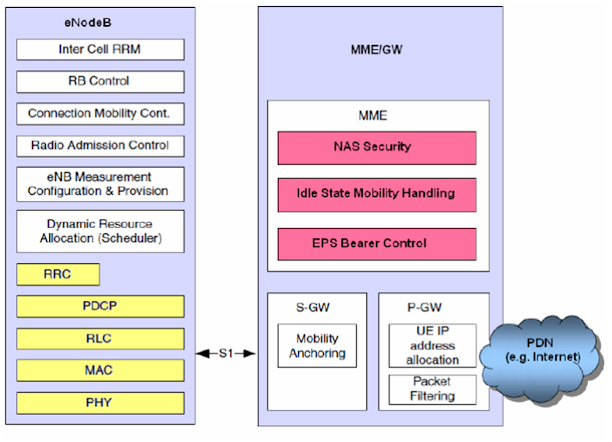How many e-NodeB supported by MME in LTE
A MME manager instance
supports 4K eNodeBs.
The maximum number of MME managers that can be configured per chassis for the VPC-DI platform has been enhanced from "24" to "48".
The MME resides in the EPC control plane and manages session states, authentication, paging, mobility with 3GPP, 2G and 3G nodes, roaming, and other bearer management functions.
MME in the E-UTRAN/EPC Network Topology-
In accordance with 3GPP standard, the MME provides following functions and procedures in the LTE/SAE network:
- Non Access Stratum (NAS) signaling
- NAS signaling security
- Inter CN node signaling for mobility between 3GPP access networks (terminating S3)
- UE Reachability in ECM-IDLE state (including control and execution of paging retransmission)
- Tracking Area list management
- PDN GW and Serving GW selection
- MME selection for handover with MME change
- SGSN selection for handover to 2G or 3G 3GPP access networks
- Roaming (S6a towards home HSS)
- Authentication
- Bearer management functions including dedicated bearer establishment
- Lawful Interception of signaling traffic
- UE Reachability procedures
- Interfaces with MSC for Voice paging
- Interfaces with SGSN for interconnecting to legacy network








No comments:
Post a Comment